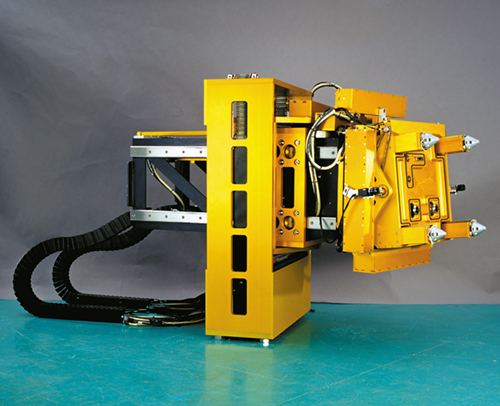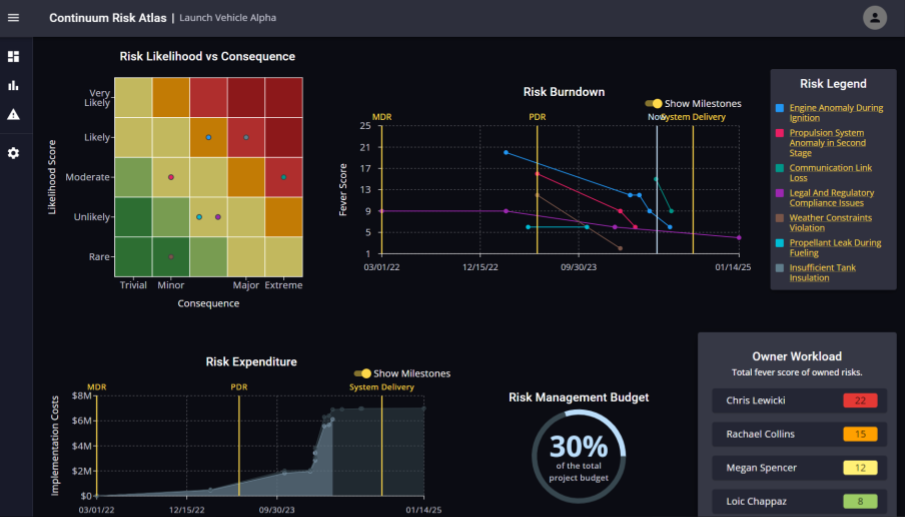The Perfect Mate for Safe Fueling
Originating Technology/NASA Contribution
Referred to as the “lifeline for any space launch vehicle” by NASA Space Launch Initiative Program Manager Warren Wiley, an umbilical is a large device that transports power, communications, instrument readings, and fluids such as propellants, pressurization gasses, and coolants from one source to another. Numerous launch vehicles, planetary systems, and rovers require umbilical “mating.” This process is a driving factor for dependable and affordable space access.
With future-generation space vehicles in mind, NASA recently designed a smart, automated method for quickly and reliably mating and demating electrical and fluid umbilical connectors. The new umbilical concept is expected to replace NASA’s traditional umbilical systems that release at vehicle lift-off (T-0). The idea is to increase safety by automatically performing hazardous tasks, thus reducing potential failure modes and the time and labor hours necessary to prepare for launch. The new system will also be used as a test bed for quick disconnect development and for advance control and leak detection. It incorporates concepts such as a secondary mate plate, robotic machine vision, and compliant motor motion control, and is destined to advance usage of automated umbilicals in a variety of aerospace and commercial applications.
Partnership
Under a Small Business Innovation Research (SBIR) contract with Kennedy Space Center, Rohwedder, Inc., of Orlando, Florida, has successfully commercialized the Smart Remote Umbilical Mating System (SRUMS), based on NASA’s next-generation umbilical technology. In June 2002, Rohwedder delivered a working prototype to NASA. The Space Agency then added its personal touches to fulfill its requirements for spacecraft applications, including remote operation capability and an improved vision system.
Product Outcome
SRUMS is one of the most advanced fueling systems available in today’s market, as it decreases the need for human intervention during potentially dangerous fueling operations. Applications include the individual and gang mating of launch vehicles, as well as commercial aircraft at airport terminals, trucks at truck stops, military vehicles in the field or depot, and fleet automobiles at service stations and depots. The technology could potentially come in handy at fueling facilities for commercial vehicles utilizing alternative fuels. Major automotive companies are currently working on prototype hydrogen-fueled vehicles where the SRUMS technology could provide a useful margin of safety in fueling operations.
NASA tested the SRUMS technology at its Launch Equipment Test Facility, where it was installed on the Agency’s “ASEA” robot—a mechanism that simulates the motions of a launch vehicle triggered by wind pressure. Looking ahead to future exploration missions, NASA is considering SRUMS for methane-fueled Mars exploration rovers. Additionally, with the capability to connect, disconnect, and reconnect during any point in the countdown process, SRUMS could lead to cheaper, safer, and more reliable launches for all future space vehicles.
The Space Launch Initiative is a NASA-wide research and development program managed by the Marshall Space Flight Center. Its mission is to open space for commercial, scientific, and personal pursuits, and to enable exploration of the universe by rendering space transportation much safer, less expensive, and more reliable than current commercial launch vehicles.

The Smart Remote Umbilical Mating System is one of the most advanced fueling systems available in today’s market, as it decreases the need for human intervention during potentially dangerous fueling operations.













